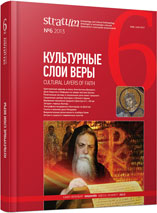Типы и назначение литейных сосудов в средневековой Болгарии
Typology and Function of Melting Vessels in Medieval Bulgaria
Author(s): Stela DonchevaSubject(s): History, Archaeology, Economic history, Middle Ages, 6th to 12th Centuries
Published by: Издательский дом Stratum, Университет «Высшая антропологическая школа»
Keywords: medieval Bulgaria; production centers; medieval metallurgy; jewelry craſt smanship; molding vessels; crucibles
Summary/Abstract: The large number and diversity of the molding vessels found during excavations on the main production centers of Medieval Bulgaria represent an indisputable evidence for the development of metallurgy and jewelry craft smanship. In the workshops of the First Bulgarian Empire (9th—11th cc.) there were used stoppered semispherical crucibles with thick walls, elongated and broadened bottom, pinched handle and narrow neck for pouring melted metal. They were used only once and were produced after wooden model out of sedimentary or marly loam with admixture of fi ne quartzy sand spread in the North-Eastern regions of Bulgaria. In the time of the Second Bulgarian Empire (12th—14th cc.) there were applied the so-called “poty” — open molding vessels of small size with a semispherical, oval or conic shape of the body. More rarely occur cylindrical vessels. Most of them are thick-walled with a sharp bottom and pinched orifice. These were also produced after a wooden model and used repeatedly. In the ceramic paste, a higher content of iron could be observed, together with quartzy sand which was roughening the surface of the vessels. The analysis of the metal preserved on the walls of the vessels shows that it is impossible to determine the exact composition of the original alloy. The conclusions of the paper are based on the information about the composition of clay, reconstruction of the technological process and the changes occurred in the structure of the vessels after thermal effect and melting of metal.
Journal: Stratum plus. Археология и культурная антропология
- Issue Year: 2013
- Issue No: 6
- Page Range: 243-254
- Page Count: 12
- Language: Russian
- Content File-PDF

